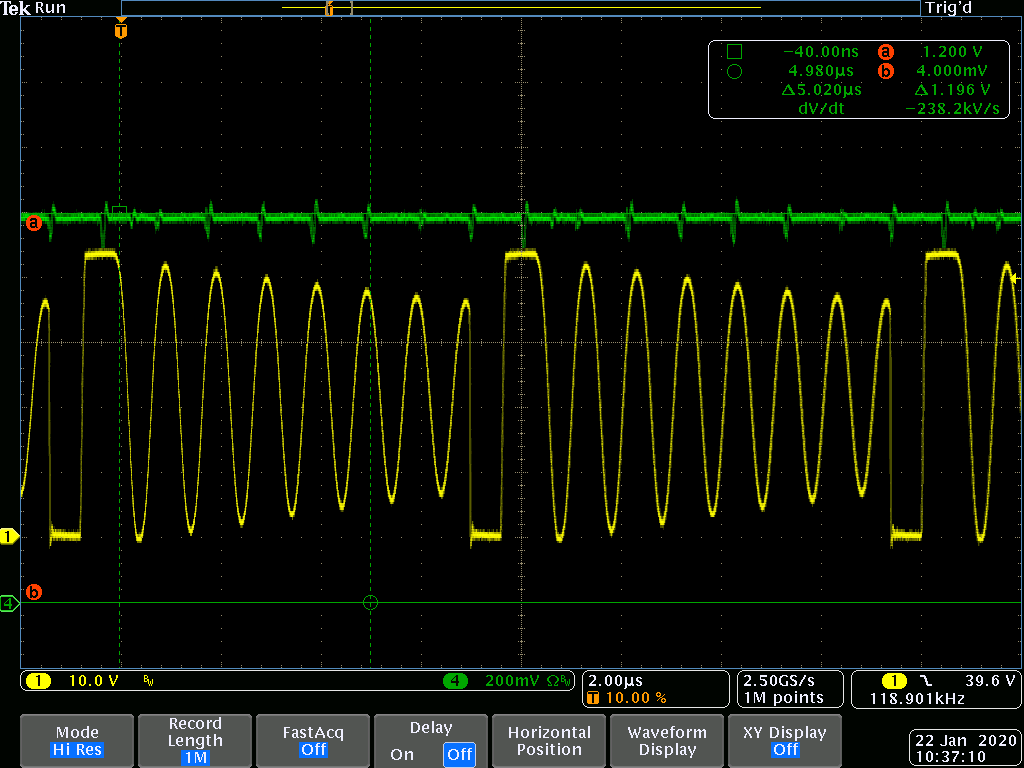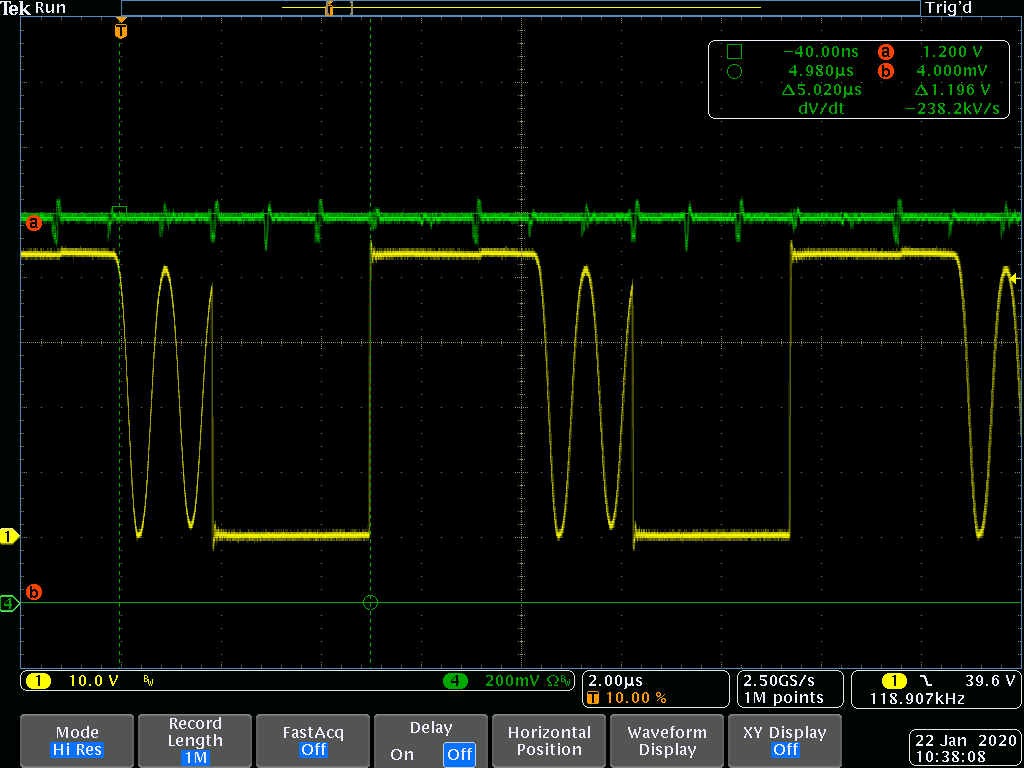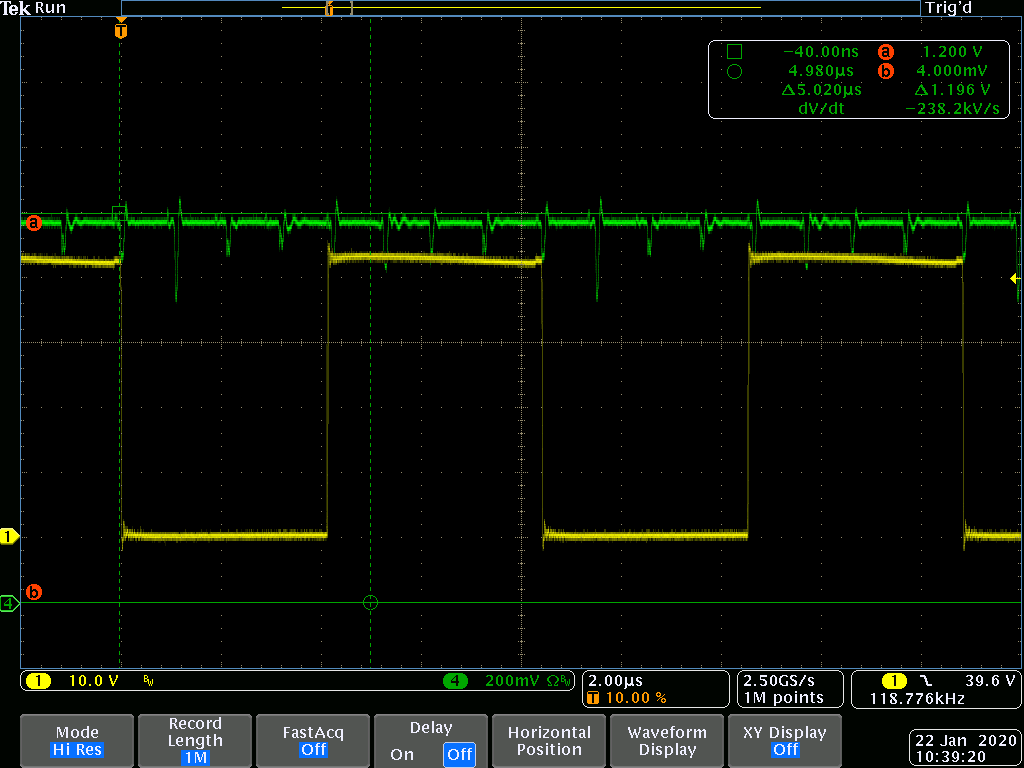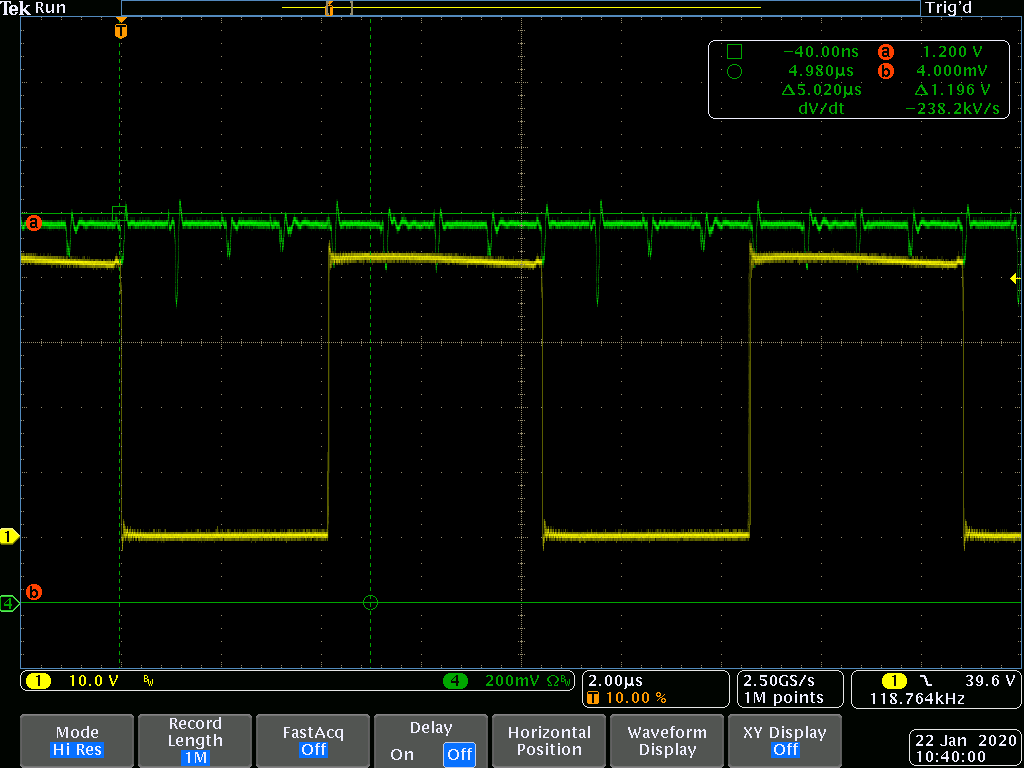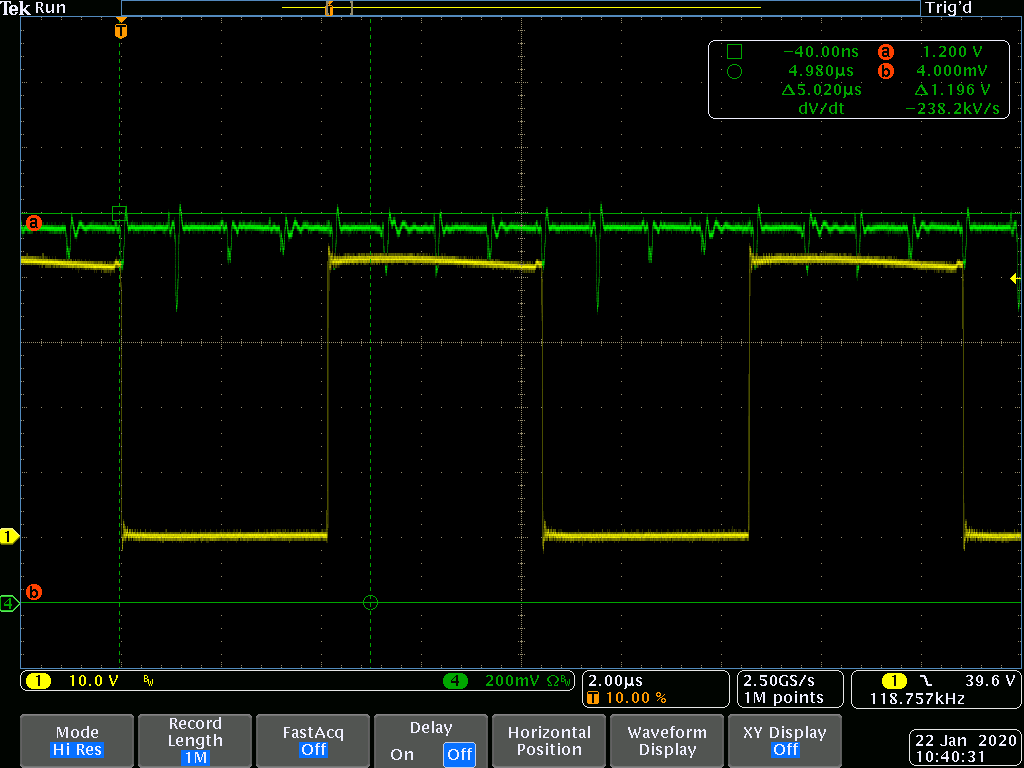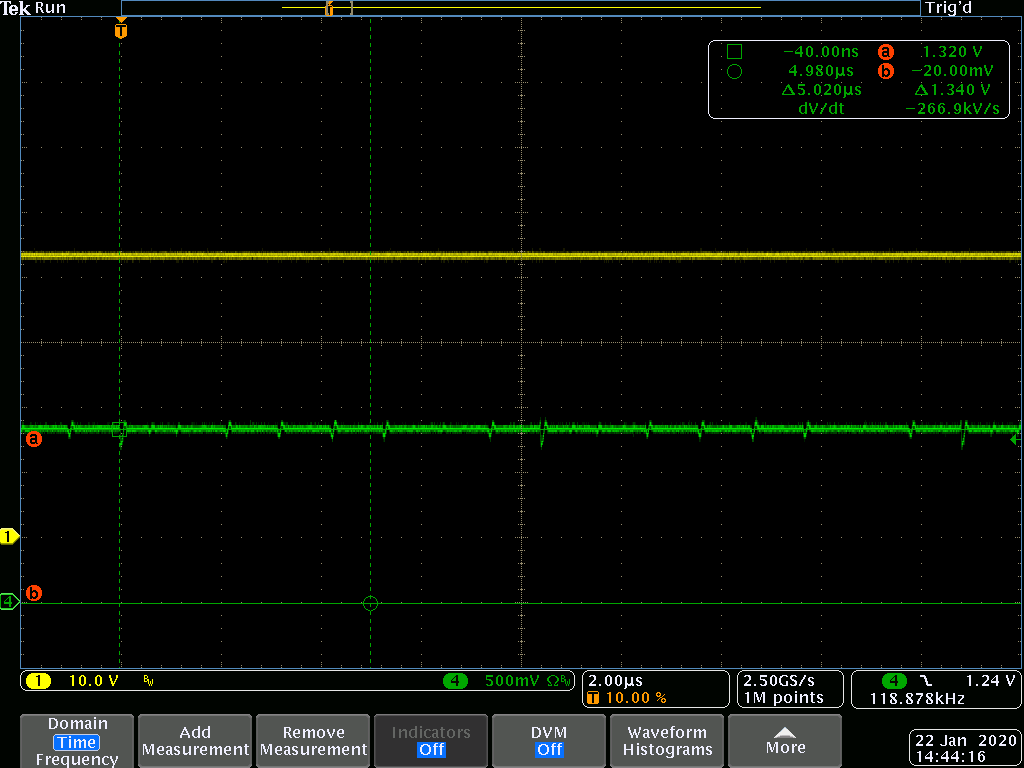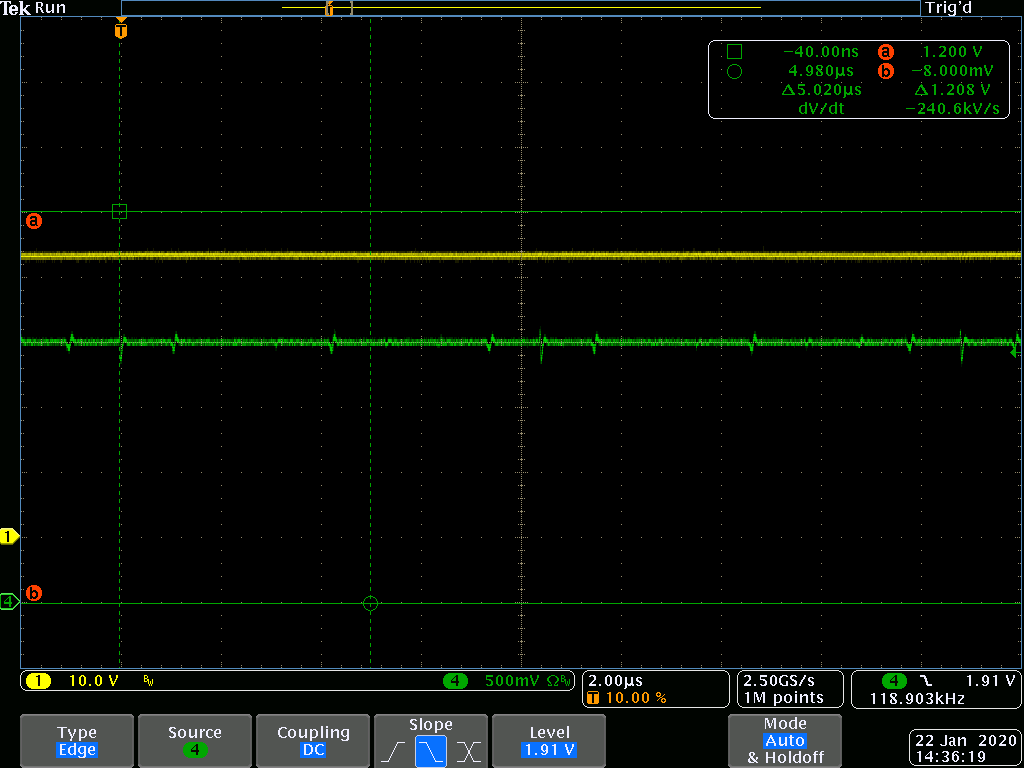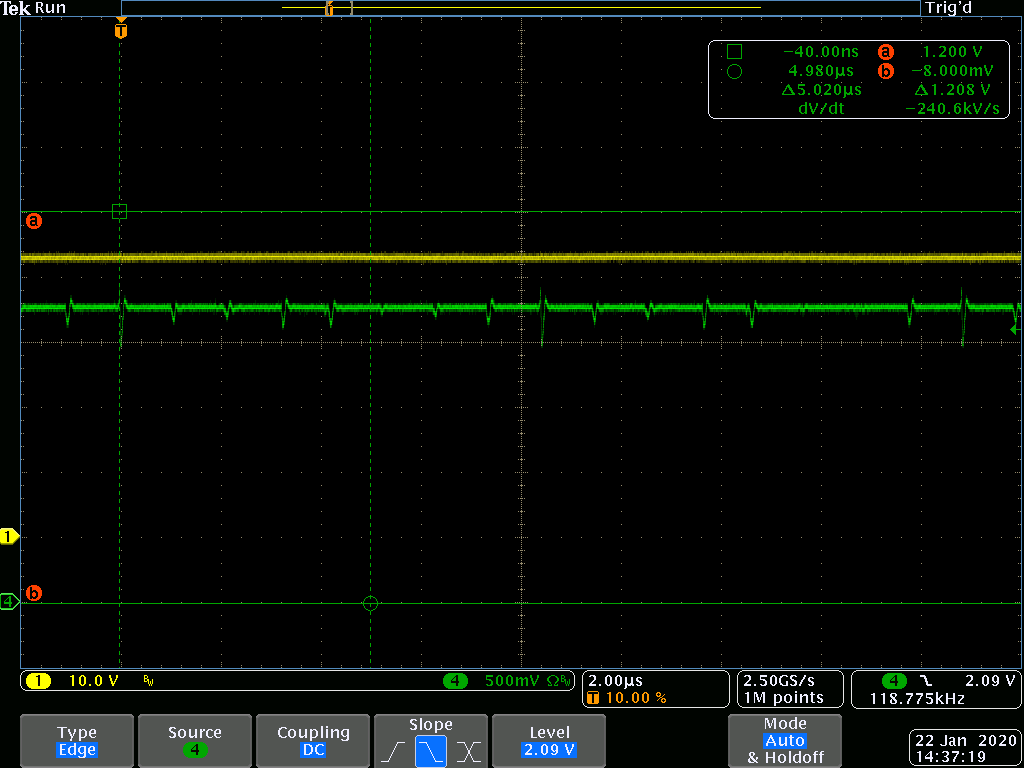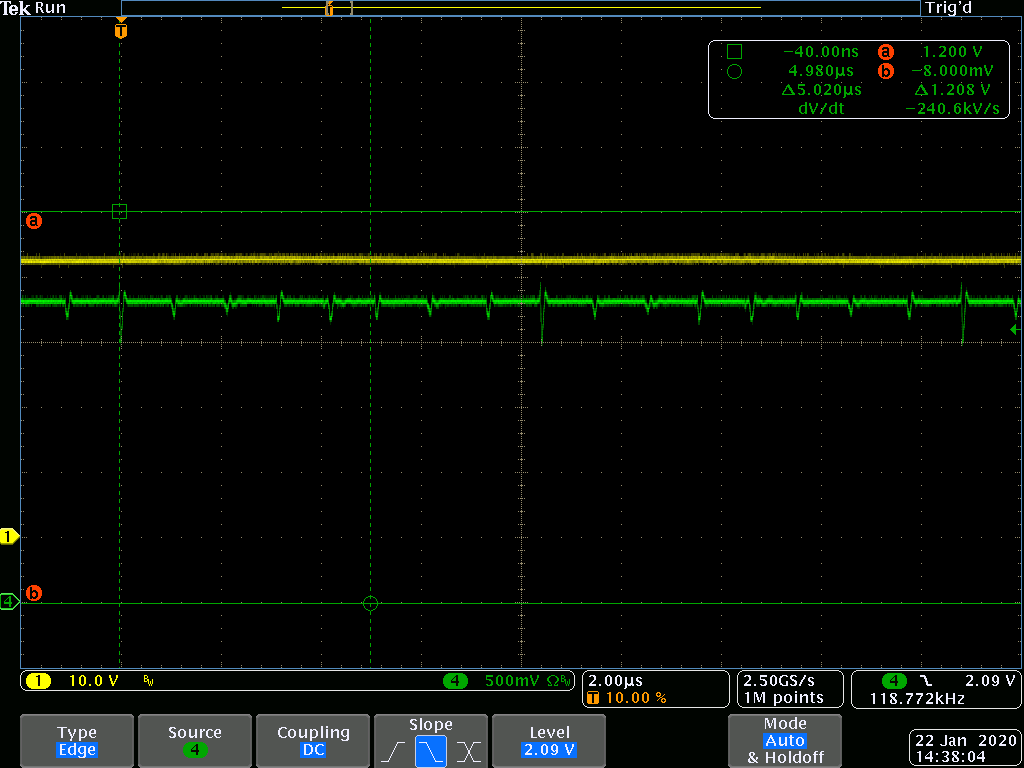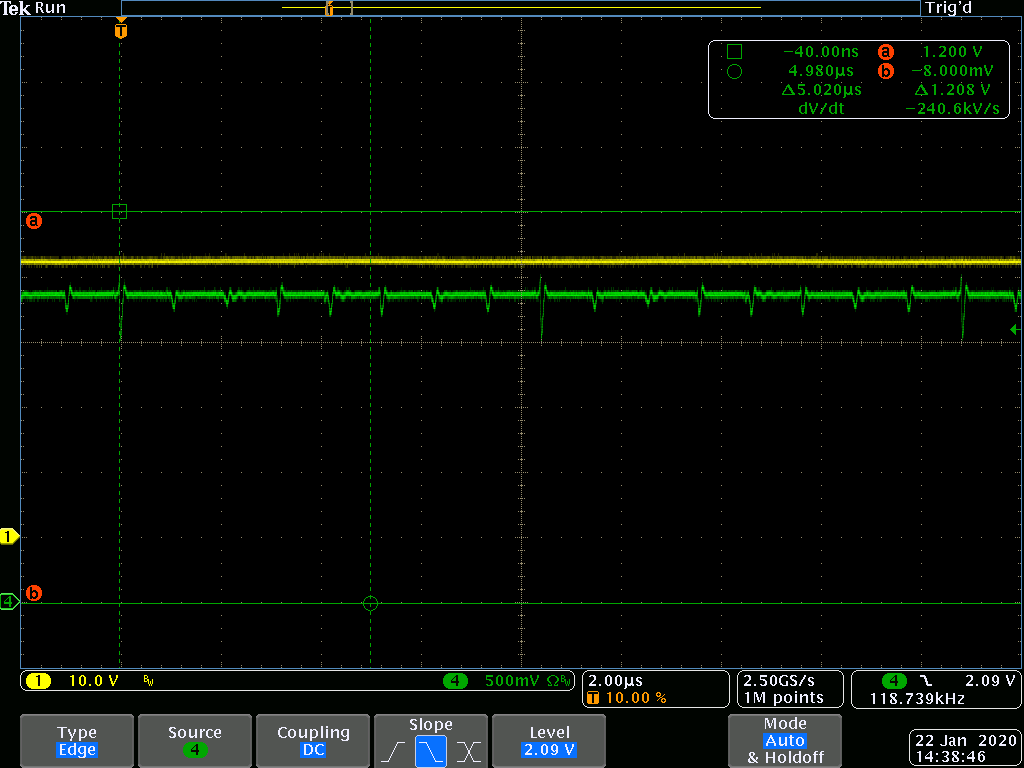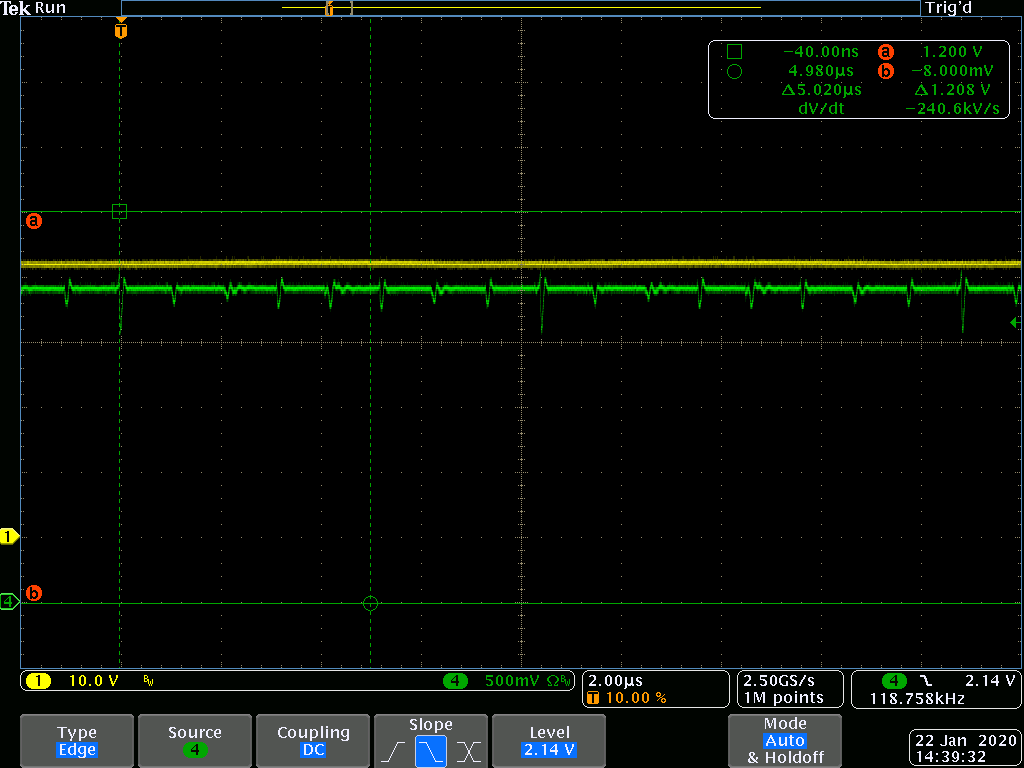I have two designs with this IC (LM5122), a 20V to 27V, 8 phase, 3.2KW converter and a 26V to 54V, 8 phase, 3.2KW converter. Both are operational and stable. The first configuration has had several 1000 units in production with no issue.
I am attempting to develop a 20V to 45V, 8 phase, 3.2KW converter based on the first design.
My first several attempts had issues with voltage regulation in continuous mode. In discontinuous mode the regulation is good, but falls about 5% when all 8 phases go into continuous mode, and continues to sag with more load. The converter is NOT power limited and it is stable. The voltage across the bottom regulation string resistor is 1.2V and starts to sag when it goes continuous.
As a work around I have resized the main inductors to stay in discontinuous mode under all load conditions. I have changed the current limit filter and compensation all over the place with little to no effect. The only filter configuration that worked was when my tech misunderstood instructions and changed the current input resistors to 30K (from 100 ohms) with a 2200pF cap. This configuration had acceptable regulation (2%) over the full load profile but I'm reluctant to operate with this filter configuration for obvious reasons.
What am I missing to get this configuration to work in continuous mode?


